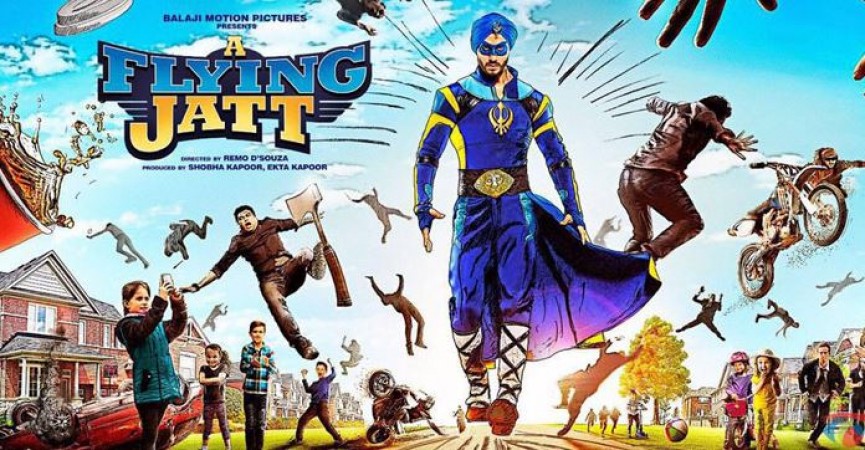
The genre of superhero films has grown in popularity thanks to memorable sequences and moments that perfectly embody these characters' extraordinary powers. Awe-inspiring moments include Quicksilver's race scene in X-Men: Days of Future Past and the courageous hostage rescue by Flying Jatt in the airport. Superhuman agility and speed are displayed in both sequences, but in unique and captivating ways. We will analyse and contrast these two scenes in this piece, pointing out the ways in which they are similar and different in terms of character development, impact, and execution.
Tiger Shroff plays Aman in the 2016 Indian superhero film "A Flying Jatt," which was directed by Remo D'Souza. Aman is a shy martial artist who develops superhuman abilities, including flight. The movie is a fun spin on the superhero genre and has a powerful environmental message. In one of the film's most memorable sequences, Aman rescues hostages in an airport.
The antagonist Raka, portrayed by Hollywood action star Nathan Jones, leads a gang of goons that have taken over the airport at the start of the scene. As innocent lives are at risk, the tension grows. Aman, who is still getting used to his abilities, steps up to the challenge and demonstrates how he has changed from a timid hero to a self-assured rescuer.
The images are vivid and colourful, highlighting what makes Aman unique as Flying Jatt. He moves like an experienced acrobat as he soars through the airport. As he battles to maintain his turban, which represents his identity as a Sikh and his duty as a superhero, he struggles to maintain his sense of vulnerability despite his powers.
Evan Peters plays Quicksilver, a mutant with superhuman speed, in the Bryan Singer-directed 2014 film "X-Men: Days of Future Past." Quicksilver's scene is one of the best in the movie, which is a part of the well-known X-Men franchise. In the film, Quicksilver is assigned to assist Magneto in escaping a very secure prison.
The inventive use of slow-motion photography and the lively soundtrack make the scene stand out. Time appears to stop as Quicksilver makes his way through the prison, enabling him to perform a number of amusing and useful tasks. His easygoing manner and lively disposition give the scene a humorous and relatable edge.
Superhuman speed and agility are the main themes of both the Flying Jatt and Quicksilver scenes. Aman and Quicksilver move at a speed that is nearly unfathomable while navigating their surroundings with amazing dexterity.
High stakes and tension: The protagonists in both scenarios are in a race against time to rescue hostages. The audience is kept interested by the urgency and suspense this high-stakes scenario provides.
Visual Spectacle: The scenes have a striking aesthetic, capturing the movements of the characters with the use of inventive camera techniques. While Quicksilver's actions are shown in exquisite detail in "X-Men: Days of Future Past," slow-motion is used in "A Flying Jatt" to depict Flying Jatt's graceful flight and dodging of obstacles.
Tone and Style: "A Flying Jatt" emphasises humour and environmental awareness in a lighthearted, family-friendly manner. On the other hand, darker themes and intricate character relationships are frequently explored in the X-Men franchise. Even in a serious setting, Quicksilver's scene in "X-Men: Days of Future Past" keeps a lighthearted and humorous tone.
Character Development: The scenes accomplish a variety of goals for the characters. In "A Flying Jatt," Aman's acceptance of his superhero identity and responsibilities occurs during the airport rescue, which marks a turning point for him. Conversely, Quicksilver's scene serves more as a character showcase, showcasing his cheeky nature.
Cultural Context: Aman's turban and the themes of environmental preservation are two examples of how "A Flying Jatt" combines aspects of Sikh culture. This gives the scene a depth of cultural complexity that isn't present in the X-Men universe's American superhero setting.
For their respective audiences, both scenes have had a profound effect. The film "A Flying Jatt" struck a chord with Indian audiences due to its distinct fusion of environmental awareness and superheroism. The Flying Jatt persona went on to represent environmentally conscious bravery. However, the Quicksilver scene from "X-Men: Days of Future Past" is praised for its inventive filmmaking and is frequently mentioned as one of the franchise's best scenes.
Two amazing examples of superhuman speed and agility brought to life on the big screen are Quicksilver's speedster sequence in "X-Men: Days of Future Past" and the Flying Jatt's airport rescue. They are different in terms of tone, style, character development, and cultural background, even though they have certain things in common, like using speed and agility to free hostages. These sequences have made a lasting impression on the superhero film industry, demonstrating the variety of ways in which superhuman abilities can be portrayed to suit the needs of different audiences and narrative objectives. There is more than one way to save the day, as demonstrated by the nimble Quicksilver and the environmentally conscious Flying Jatt.
Bollywood's Best-Kept Secret: The Ever-Changing Title of 'One Two Ka Four'
Juhi Chawla and Jackie Shroff's Absence from 'One 2 Ka 4' Promotional Materials